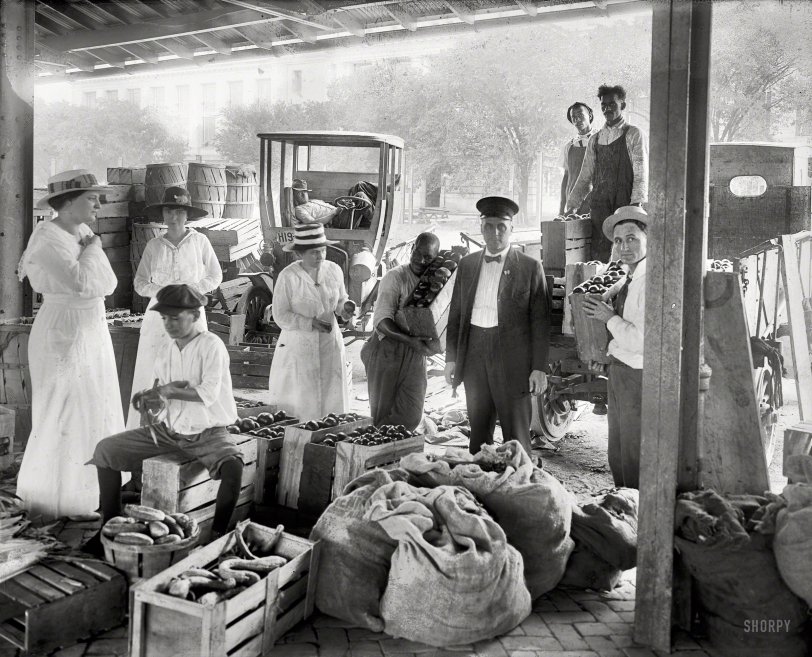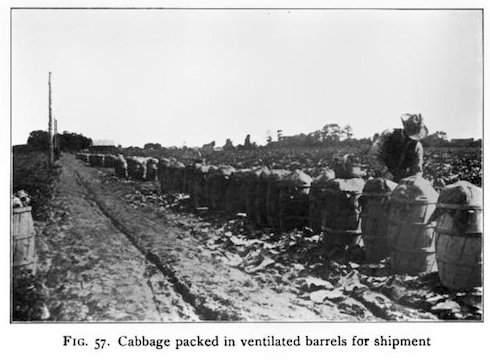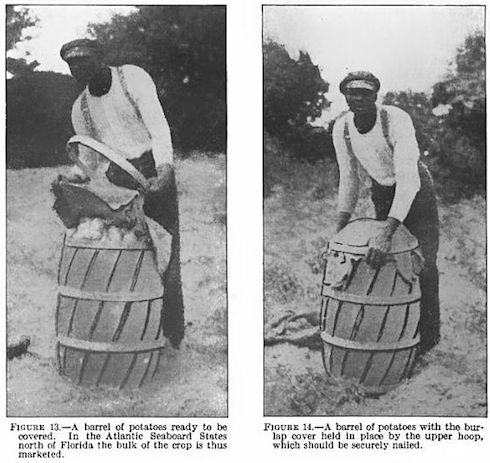


Framed or unframed, desk size to sofa size, printed by us in Arizona and Alabama since 2007. Explore now.
Shorpy is funded by you. Patreon contributors get an ad-free experience.
Learn more.

- Baldwin 62303
- Baldwin VO-1000
- Cold
- No expense spared
- Tough Guys
- Lost in Toyland
- And without gloves
- If I were a blindfolded time traveler
- Smoke Consumer Also Cooks
- Oh that stove!
- Possibly still there?
- What?!?
- $100 Reward
- Freeze Frame
- Texas Flyer wanted
- Just a Year Too Soon
- WWII -- Replacing men with women at the railroad crossing.
- Yes, Icing
- You kids drive me nuts!
- NOT An Easy Job
- I wonder
- Just add window boxes
- Icing Platform?
- Indiana Harbor Belt abides
- Freezing haze
- Corrections (for those who care)
- C&NW at Nelson
- Fallen Flags
- A dangerous job made worse
- Water Stop
Print Emporium
Farm Fresh: 1917

1917. "City Market. Washington, D.C." Our third glimpse of this produce market. National Photo Company Collection glass negative. View full size.
Open Stave Barrels
The previous post shows a better view of the barrels and reveals the contents to be potatoes and cabbages. Knowing the crops, I was able to find a bit of contemporaneous information. These types of ventilated barrels were called "slat barrels" or "open stave barrels" and typically transported produce from truck farms to market by railroad.
The two photos (I can't find the third) show the same uniformed man and group of women. Is this some sort of inspection? Why are the women in white? Are they from a women's club? a benevolence league? suffragists? the average shopper? and the hats!
Farm and Garden Rule-Book,
A Manual of Ready Rules and Reference,
Eighteenth Edition, 1912.Packages for truck crops (L.C. Corbett)
Potatoes. — Truck crop potatoes are shipped from the Atlantic seaboard points in ventilated barrels holding 2¾ bushels; from the Mississippi Valley and Gulf States in sacks holding 190 pounds; from Maine in sacks holding 165 pounds; and from the California and Colorado sections in sacks holding 100 pounds (everything in this region being sold by net weight rather than by bushel). In northern sections of Vermont, New York, Michigan, Wisconsin, potatoes are largely sold in bulk by weight at so much per bushel.
Cabbages from the Atlantic seaboard states south of Baltimore are shipped either in crates or ventilated barrels holding 2¾ bushels. …
Photos below: Figure 57 from Garden Farming by Lee Cleveland Corbett, 1913; Figures 13 and 14 from Farm Inventories by James S. Ball, 1920.


Jute, not plastic
Apparently, one upon a time, there has been a life before and without plastic.
Speaking as as an engineer, I like those lightweight barrels with the biased staves. A very elegant solution for a ventilated, light-weight transport packaging. After all, the didn't yet have forklifts to push pallets around.
And a barrel rolls all on its own. You do have to pack the contents more carefully, though. Or else you might bruise the produce when doing so.
If I had to guess, they might also have been short-time use-and-discard containers. Not something where you would want to use expensive waterproof oak barrels.
Addendum: No Great Pacific Garbage Patch with that stuff. Why did we ever change to plastic?
Bushels
The basket of cucumbers in front of the boy looks like what we called a bushel basket when I was a child in the 60s. The barrels in the back appear to be much larger, holding two or maybe three bushels. They do appear to be made of the same thin slats as the bushel basket. They'd be much lighter than an oak whiskey barrel, but not nearly as sturdy. Still, they'd probably suffice for hauling and storing fruit and vegetables.
Re: Unusual barrels
Could these actually be "bushels"? These were used for holding 32 dry quarts of things such as produce and were a unit of measure in and of themselves. To me, they did not look as sturdy as actual barrels.
Unusual barrels
I worked in the wooden barrel industry for 33 years, and have never before seen helically wound staves, nor double walled barrels, such as the slack barrels in the left background!
Thanks, Shorpy, for posting this unusual glimpse into the past!
























On Shorpy:
Today’s Top 5